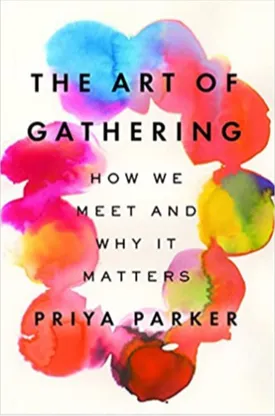The Art of Gathering: How We Meet and Why It Matters by Priya Parker
Have you ever gone to a party or some kind of gathering, only to find that it was a complete bore? Why do we gather, and why do some gatherings succeed, while others don’t? In her book The Art of Gathering, Priya Parker provides an answer. Drawing from a combination of psychology, sociology, neuroscience, cultural anthropology, and a lot of practice and experimentation, she outlines the importance of intentional gatherings and how to create them.
Gatherings not only provide a space for human connection, but they are also incredibly powerful in initiating, catalyzing, and sustaining change. It’s no surprise, then, that they are embedded in all kinds of rituals, traditions, and transitions throughout history.
Parker believes that the power of a gathering rests in the attention you pay to its three elements: its purpose, the people who come, and the protocol that sets the rules for what happens when those people come together.
When it comes to purpose, Parker suggests that you ask yourself: Why exactly do you need to gather in person, meaning why can’t you accomplish your goal via a different medium? If the answer is that you need to be in the same space to create meaning in each other’s lives, then you should think about how you can reach your goal in the most intentional way.
Regarding the people who are invited, the people who come should be diverse in a meaningful way, so that the group is composed of those who can offer unique perspectives, experiences, and skills. This will allow for greater creativity and passion, which in turn will foster a better atmosphere.
As for the protocol, Parker outlines four kinds: ritual, conversational, participatory, and orchestrated. When it comes to ritual protocols, Parker recommends establishing guidelines around such aspects as how people will enter and why it is important to be sitting in a certain seat.
Conversational protocols allow us to actively listen to each other and to acknowledge the power of others’ words. Parker recommends making sure that every person’s contribution to the gathering is valued.
Participatory protocols focus on getting people to engage with each other and opening doors towards action and change. Finally, orchestrated protocols revolve around setting the stage for meaningful experiences.
Ultimately, the art of gathering is one that requires careful planning and effort, but ultimately is rewarding and has the capacity to make a real difference in the lives of those who attend. Parker’s book shows us how we can create meaningful gatherings and why doing so matters. With her insights, we can take our gatherings to the next level.

